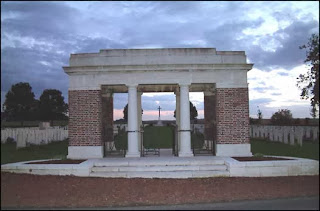Frank worked in the Business. His younger brother was a draughtsman and at the end of the war was working for Rolls Royce. Their 7 sisters helped in the shop or at home, and the eldest was a teacher. When war broke out in 1914, Frank joined the 15th Bn of the West Yorkshire Regt, raised by the Lord Mayor of Leeds in September 1915. As a member of Yarnbury Rugby Football Club, he may have shown leadership qualities right from the start as the club was affiliated to the Leeds Rifles Regiment, and several of the men played in the team. Thus, he was made a Sergeant.

The Battalion moved to Ripon for training but before Frank could go overseas with them, he was picked as a likely candidate for Commission and on 4th June 1915, became a 2nd Lieutenant with the King's Own Yorkshire Light Infantry.
He was to serve with the 9th Battalion, another Kitchener Battalion that landed in France in September 1915, but he did not join them until 1916, having arrived in France just after the Battle of the Somme had begun.
 9th KOYLI had already been involved in the Somme offensive right from the start, and continued to play their part in many of the major battles of the Somme until the campaign fizzled out in November. They were then to hold the line over the winter period, and would be there in the early months of 1917, when the Germans retreated to the Hindenburg line.
9th KOYLI had already been involved in the Somme offensive right from the start, and continued to play their part in many of the major battles of the Somme until the campaign fizzled out in November. They were then to hold the line over the winter period, and would be there in the early months of 1917, when the Germans retreated to the Hindenburg line.Frank was an Acting Captain in December 1916. Some time on the 18th, he was killed in action. He was buried in Vermelles British Cemetery, which was the cemetery which served that part of the front, and was also used by several medical units. I am yet to confirm his name on a local War Memorial.
 |
| Vermelles British Cemetery |





